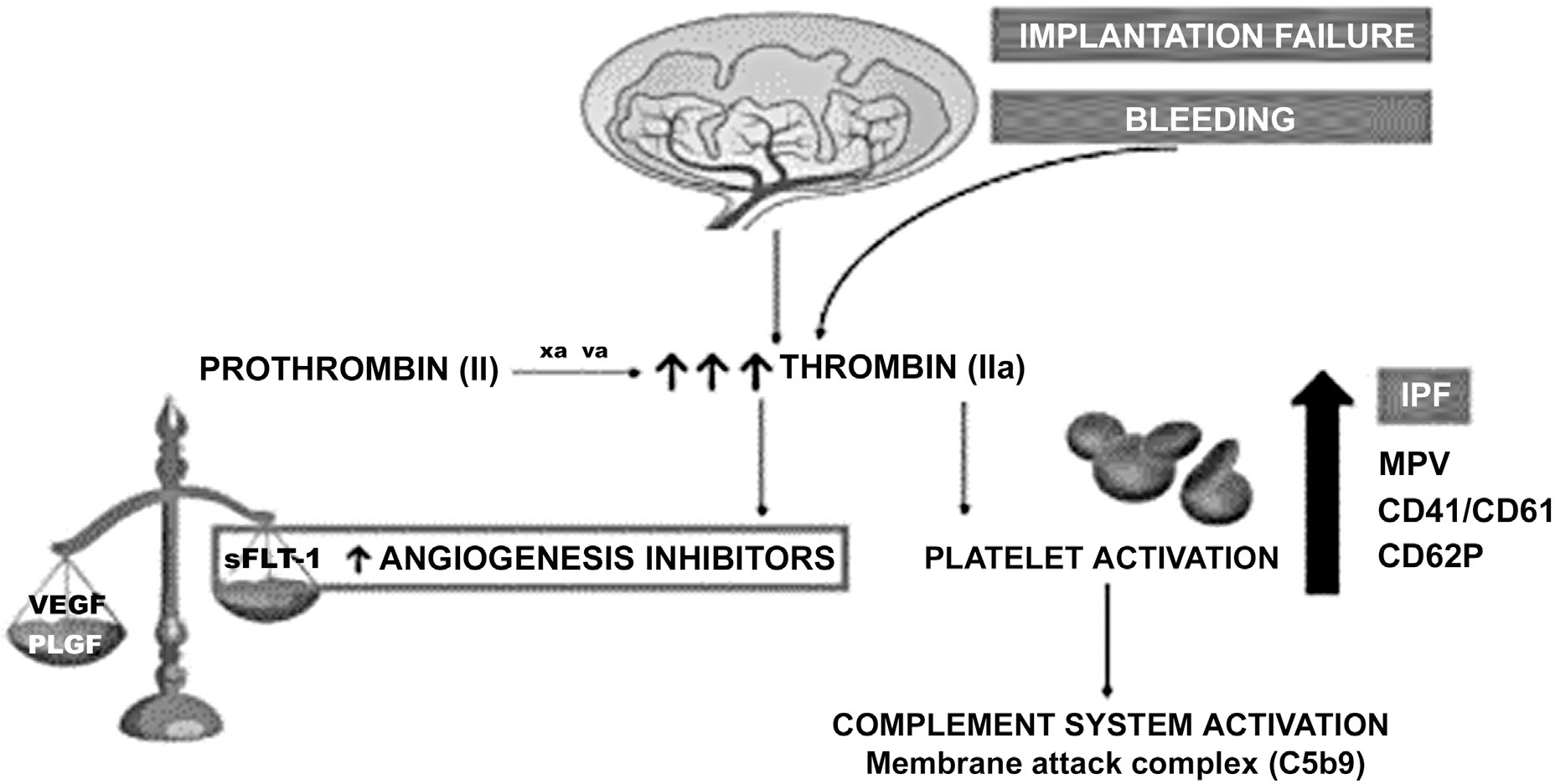Revista Brasileira de Ginecologia e Obstetrícia. 2022;44(8):771-775

Preeclampsia, a human pregnancy syndrome, is characterized by elevated blood pressure and proteinuria after the 20th week of gestation. Its etiology remains unknown, and its pathophysiological mechanisms are related to placental hypoperfusion, endothelial dysfunction, inflammation, and coagulation cascade activation. Recently, the role of the complement system has been considered. This syndrome is one of the main causes of maternal and fetal mortality and morbidity. This article discusses the hypothesis of preeclampsia being triggered by the occurrence of inadequate implantation of the syncytiotrophoblast, associated with bleeding during the first stage of pregnancy and with augmented thrombin generation. Thrombin activates platelets, increasing the release of antiangiogenic factors and activating the complement system, inducing the membrane attack complex (C5b9). Immature platelet fraction and thrombin generation may be possible blood biomarkers to help the early diagnosis of preeclampsia.
Search
Search in:


Comments